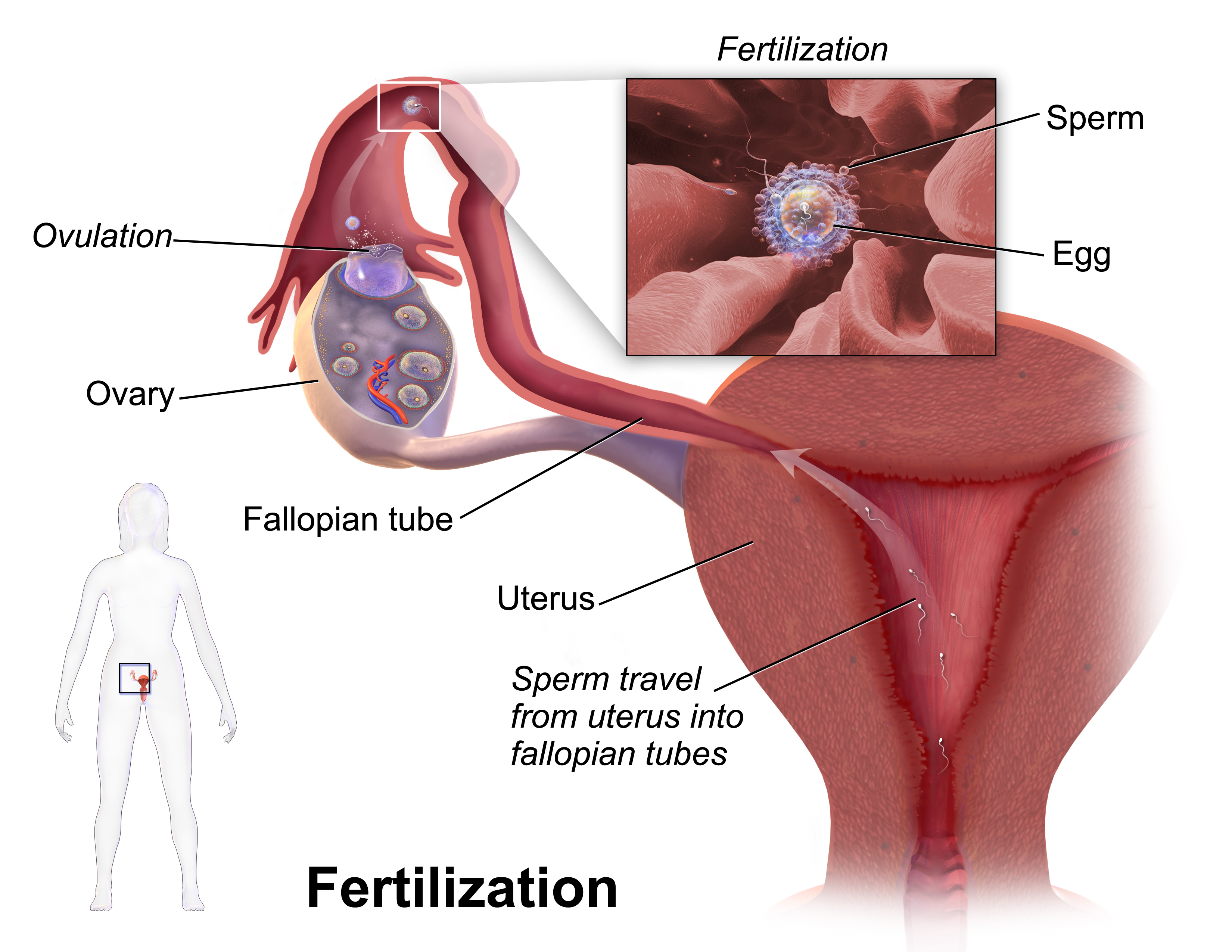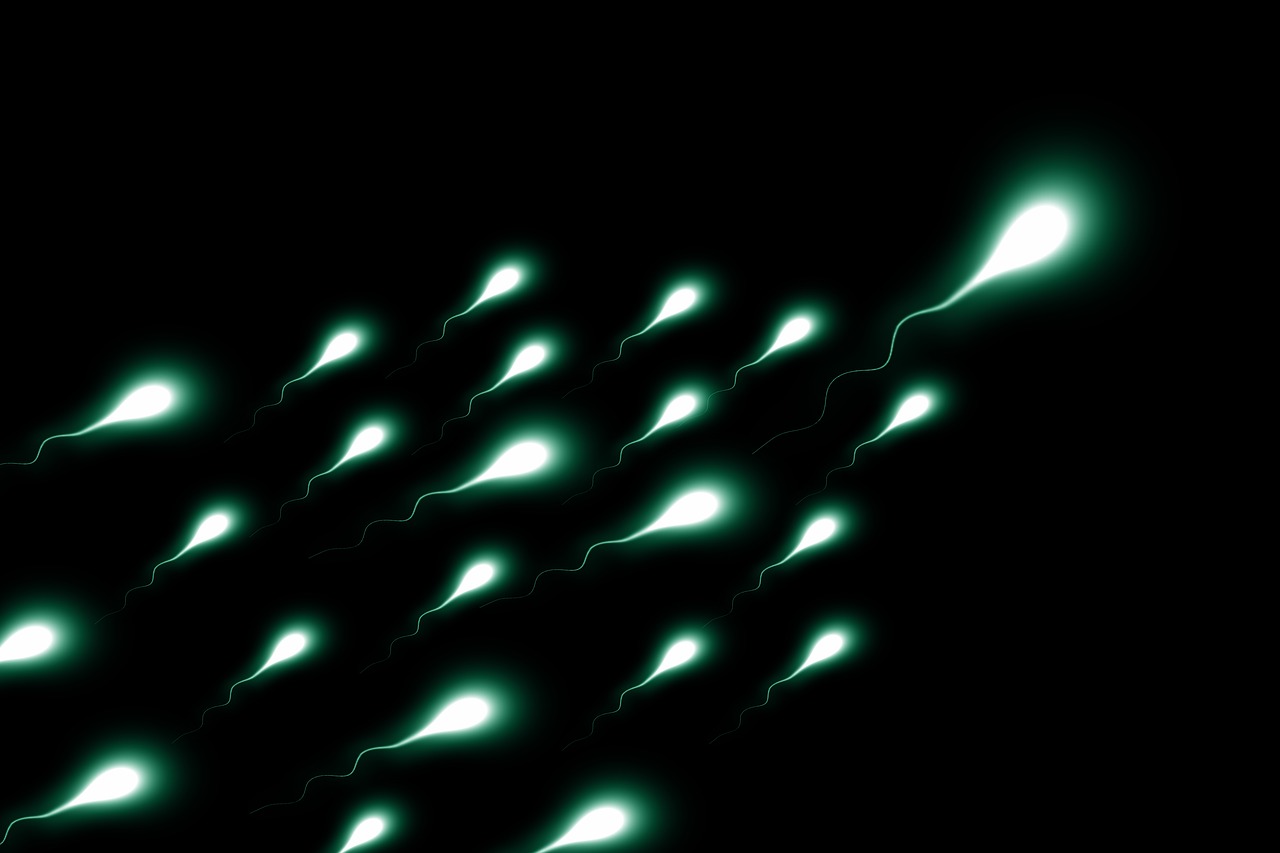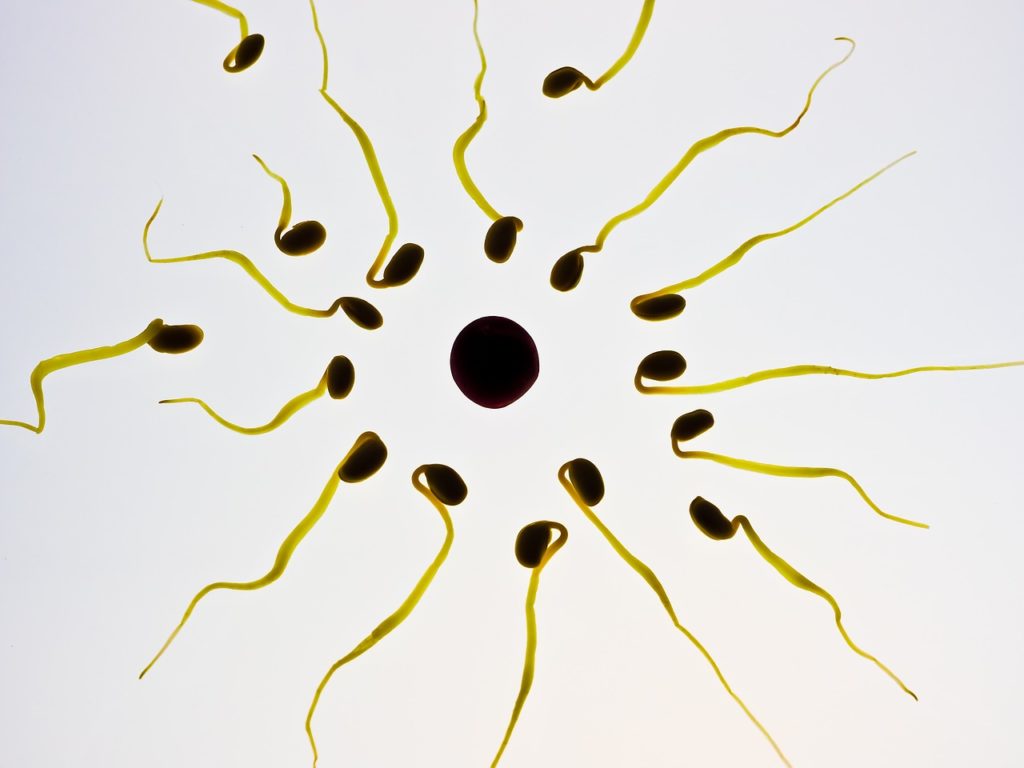Summary
– Fertilization: when 2 cells merge into 1
– All stages of fertilization: in brief
– Spermatozoa in the female genital tract
– Gametic fusion: when the 2 gametes come into contact
The fertilization of an egg requires the woman to be in the fertile period. A fertility test can better identify this period.
Fertilization: when 2 cells merge into 1
Gametes are the male and female reproductive cells. Fertilization is the fusion of two of these cells, the sperm, and the oocyte, into a single cell: the fertilized egg or zygote.
Then, it is the division of the fertilized egg by numerous mitoses (separations) that will result in the embryo’s formation.
All stages of fertilization: in brief

During sexual intercourse between a man and a woman, both childbearing age (puberty), semen is deposited in the vagina against the cervix.
Cervical mucus: necessary for sperm to fertilize
The mucus secreted at the cervix (uterine cervix) allows the passage of sperm into the uterus :
– this mucus enables only the most mobile spermatozoa to circulate and reach the ovarian tubes,
– Sperm motility is the necessary and indispensable condition for this fertilization process,
– it is the passage through the cervical mucus that assures their fertilizing power.
Spermatozoa: only 1 elected out of 300 million!

Out of an average of 300 million spermatozoa contained in a single ejaculation, only a few hundred will reach the fallopian tubes for fertilization. In the fallopian tube, only one of them will arrive :
– to pass through the walls of the oocyte to penetrate it,
– and give birth to the embryonic cell that will divide to form an embryo.
4 days after fertilization: the nesting of the embryo
During its development, the embryo formed from the egg fertilized by the sperm moves. It moves into the uterus, where it arrives around the fourth day after fertilization. It then fixes itself in the mucous membrane: it is then called nesting.
Spermatozoa in the female genital tract
After ejaculation or release of the male seminal fluid in the bottom of the woman’s vagina, the sperm undergoes a maturation stage.
The process of sperm capacitation
Capacitation is an essential prerequisite for fertilization. This process occurs when sperm acquire the ability to fertilize the oocyte :
– this capacitation in vivo, begins as soon as the male gametes (spermatozoa) pass through the cervical mucus,
– it is this mucus that allows the elimination of the decapacitation proteins that cover the spermatozoa,
– The result is a loss of membrane cholesterol, which will fluidify the plasma membrane, making it unstable and fusogenic.
Maturation necessary for fertilization
The spermatozoa thus capacity :
– become hypermobile,
– have the ability to rupture their acrosome (their outer membrane),
– and have a specific recognition of the proteins in the area to be penetrated.
Note: in vitro capacitation is an essential element of any assisted reproductive technique.
Gametic fusion: when the 2 gametes come into contact
After passing through the zona pellucida, the sperm comes into contact with the oocyte’s plasma membrane.
Fusion: several consequences
The spermatozoid becomes immobilized, and the two gametes fuse:
– the plasma membrane of the sperm is integrated with that of the oocyte,
– the nucleus of the sperm undergoes changes from the moment it is incorporated into the oocyte.
Male and female pronuclei originate in the egg’s cortex by the formation of an envelope around the chromatin.
Individualization of chromosomes and end of fertilization
Individualization of chromosomes is followed by DNA (ribonucleic acid) replication. On contact with each other, the two pronuclei are each the seat of prophase during which the chromosomes individualize themselves.
This simultaneous presence of the maternal and paternal chromosomes marks :
– the end of fertilization,
– the beginning of embryonic development.
Wish you all the best if you are on your way to fertilization.


